Klue Compete
The Competitive Enablement Platform
Learn More
FIND OUT MORE >

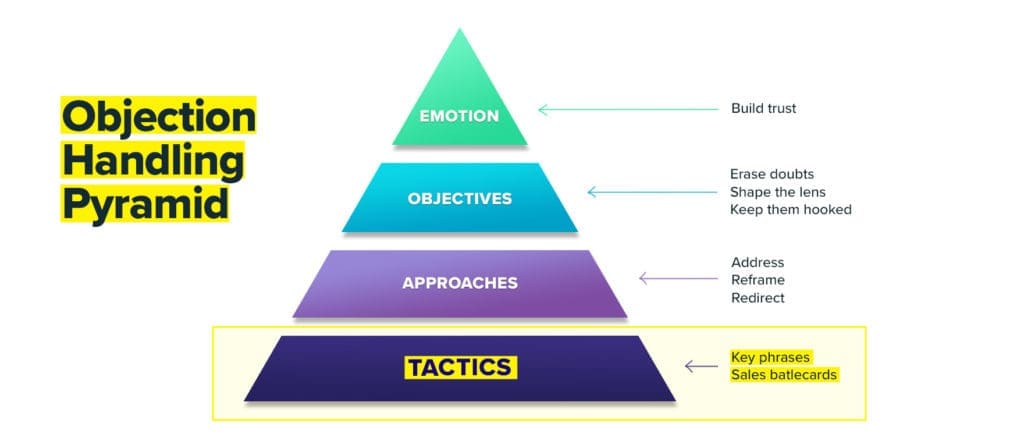

Objection handling techniques in sales are where the rubber meets the road.
You’ve made your way past the first three steps in the Objection Handling Pyramid, and now you’re ready to get tactical.
No need to overcomplicate things. We’ve boiled it down to three (and a half) easy steps.
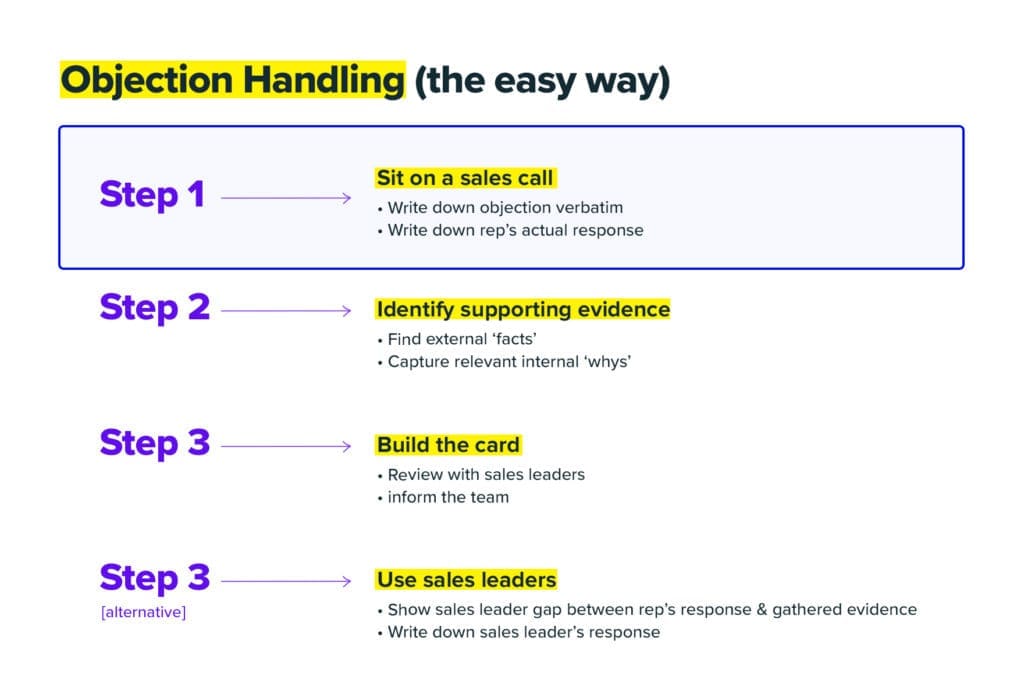

If you’re not already familiar with the most common objections levelled against your product, you should at least be familiar with your number one competitor.
Listen in on a call where your sales reps are up against that top competitor. As you’re listening, write down every objection you hear.
As sales objections come up, you’ll also want to take note of how your sales rep handles those objections.
Repeat this 10 times to get a decent sample size for your analysis.
And since you’re being analytical about it all, make sure you’re writing down the objections and how they’re being handled word-for-word — no paraphrasing.


Once you’ve listened in on at least 10 calls, take the time to pull out the most common objections. These are where you should devote most of your energy at the start.
(You could also focus on objections that seem to cause your sales reps the most headaches — even if they don’t come up in high volume)
As for how your reps are currently handling these objections, start to think about the gaps in objection handling.
This will set you up for Step 2: gathering facts and key phrases to beef up your objection handling techniques.
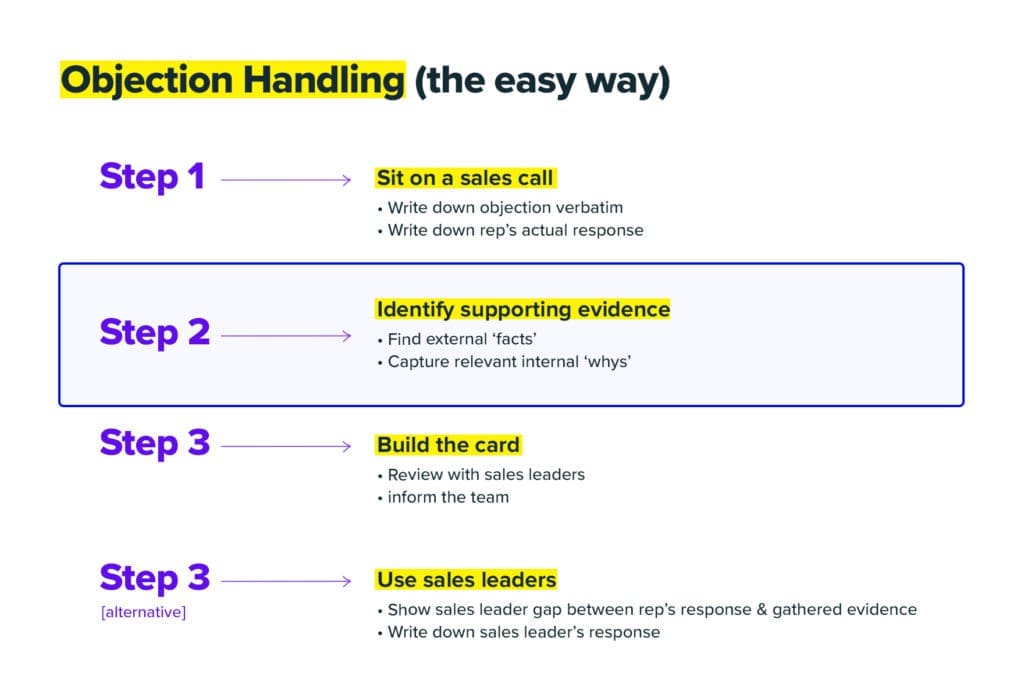

Every objection handling approach you use will require supporting facts.
Whether you’re addressing an argument head-on, reframing the context in your favour, or redirecting an objection back on track, the more you can arm your reps with solid evidence the better.
Start by looking at objections that are being handled effectively by your sales reps. Then match those handled objections with supporting proof points.
Look for a combination of third-party, objective data points, as well as internal resources.
It’s not often that a brand new sales objection comes up. So look to see how your colleagues have handled these objections in the past. Capture the relevant ‘whys’:
And now that you’ve got your common objections, examples of how they’re being handled, and some evidence to back your objection handling, it’s time to build a killer objection handling battlecard.
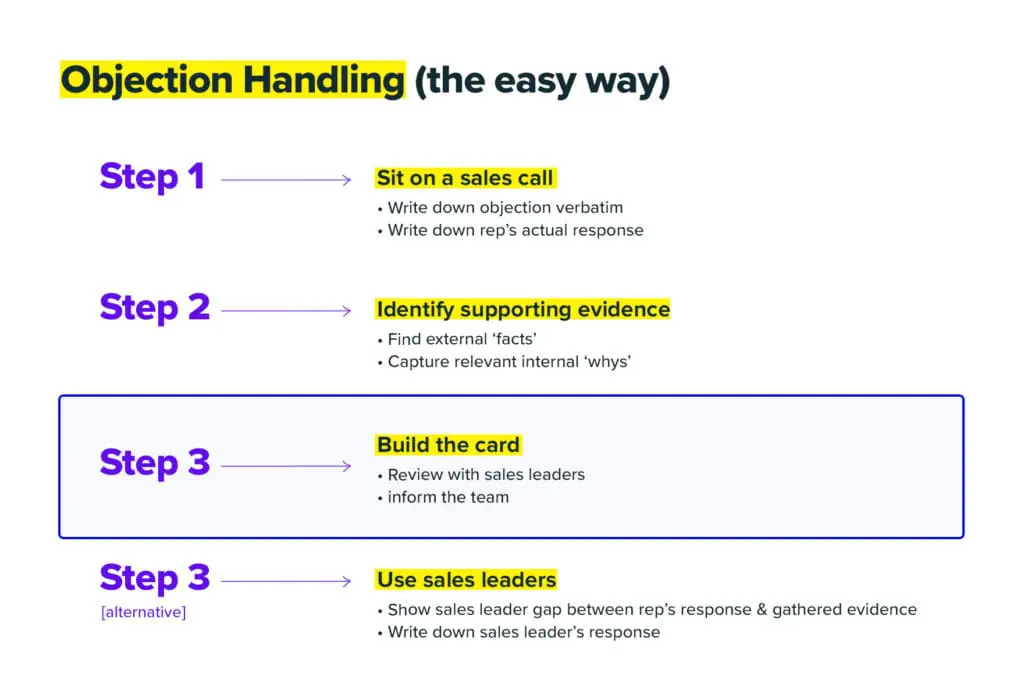

All the puzzle pieces are ready to be placed. The best way to put it all together is by creating an objection handling battlecard.
The best way to build the best battlcard is by following a simple templated formula:
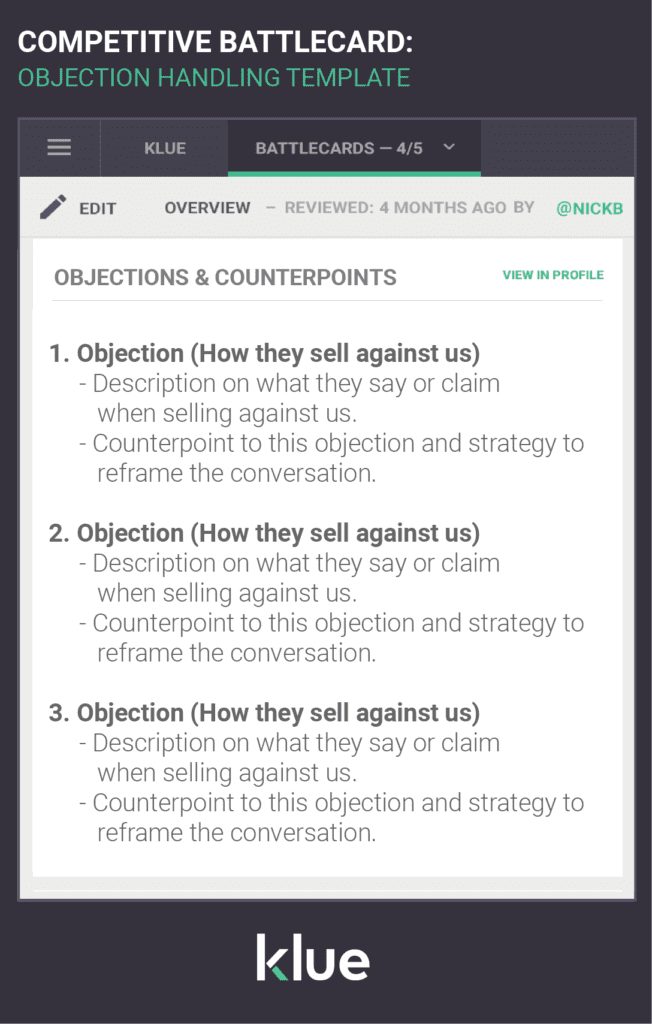

Make sure to reference or link out to all the proof points you’ve assembled directly in the card itself. Look for supporting evidence like:
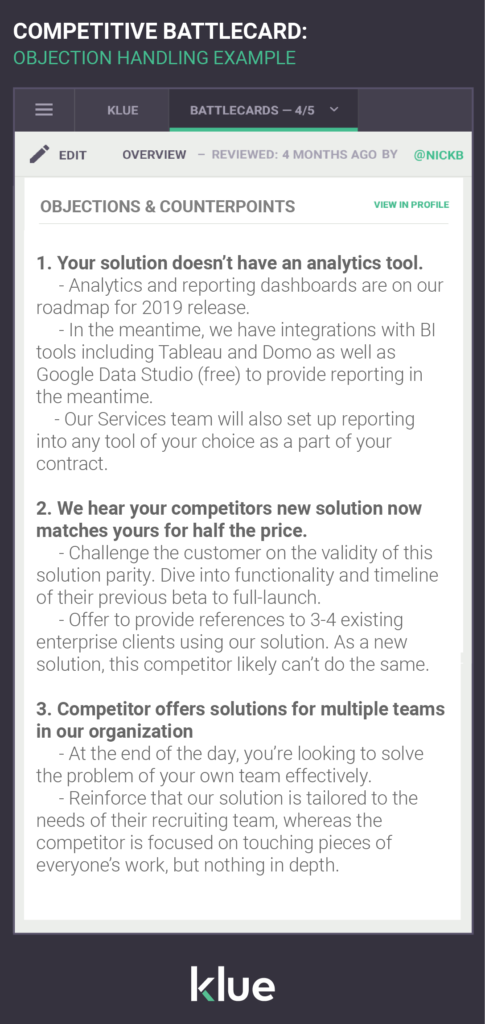

All the modelling and templating in the world won’t cover 100% of the objections handling techniques you’ll need on a daily basis.
When there is a gap between customer objections and how they’re being handled, and the objection is not easily disproven by third-party data, loop in your sales leaders and work towards a solution.
If you’re in charge of competitive for your team, make sure you’re going into conversations with sales team already having done the prep work beforehand.
You will present the objections (and why you’ve decided these are the most important objections), how there currently being handled, the gap you’re seeing, and some ideas for how to move forward.
In short, you want the process to be collaborative, but as the one in charge of competitive, you’ll want to make sure you’re doing the heavy lifting and not shift the burden onto the sales reps.
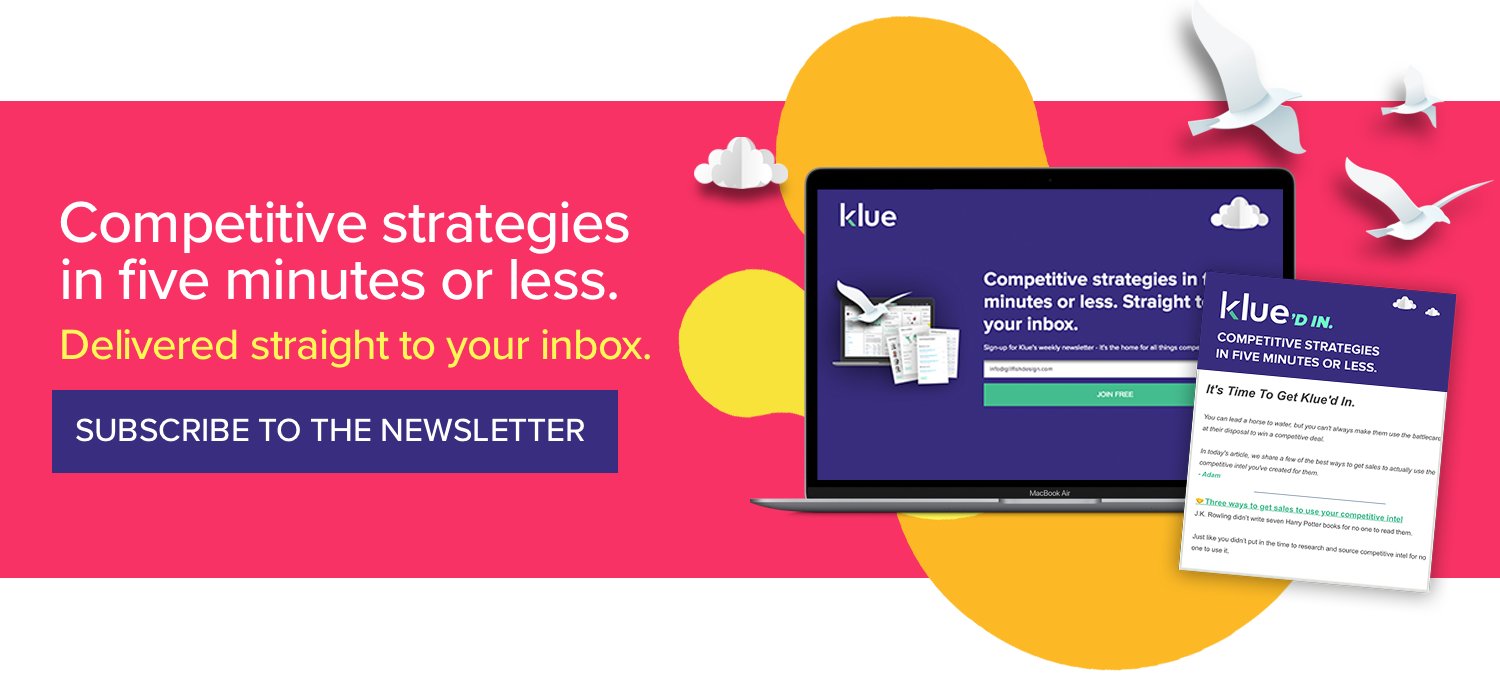



Competitive Enablement
Product marketers conducting competitive research are drowning in reviews, reports, and messy notes. Here's how Klue's AI foundation will help you complete this analysis in seconds, not weeks.


Competitive Enablement
The topic of Large Language Models (LLMs) has a lot of confusion. Here's what you need to know about how Klue is working with them.


Let’s do it. Tell us a bit about yourself and we’ll set up a time to wow you.
Let's do it. Tell us a bit about yourself and we'll set up a time to wow you.
XLet's do it. Tell us a bit about yourself and we'll set up a time to wow you.
XSubscribe to get our latest AI functionality and news in your inbox.
XOur Buyer Pulse feature, set to launch in Q2 2024, offers valuable insights into the factors influencing buyer decisions in your pipeline. By signing up for the waitlist, we can better gauge interest and proactively engage with you to streamline the setup and integration process before the feature becomes widely available.
X